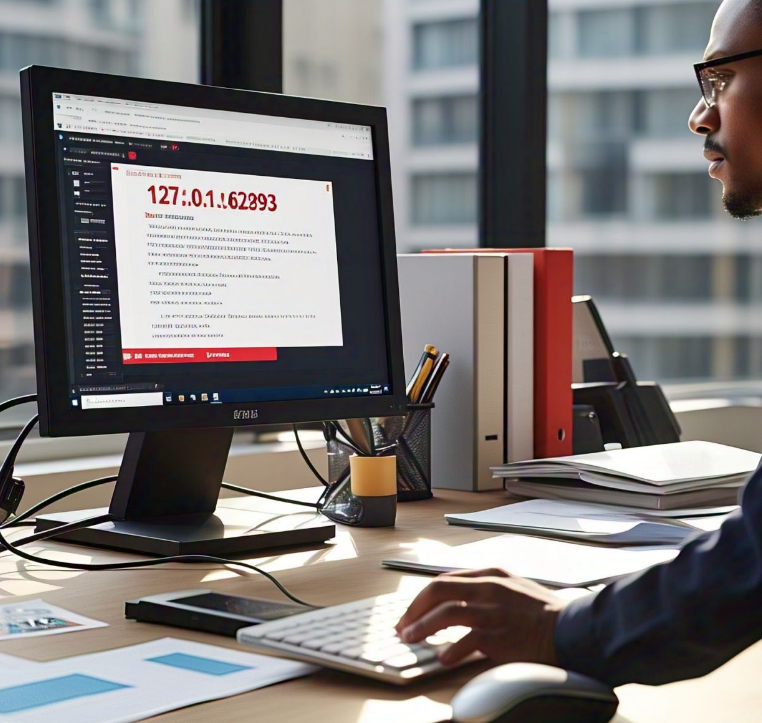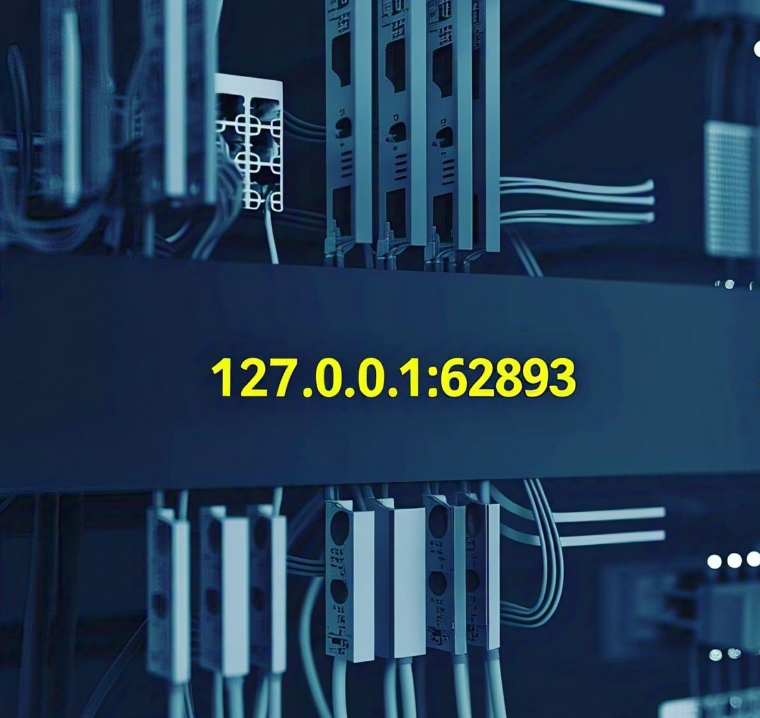Introduction to 127.0.0.1:62893
When it involves know-how networks, IP addresses like 127.Zero.Zero.1:62893 regularly come up, specially in development environments. This address is not only a random set of numbers; it performs a critical role in how computers talk with themselves. Known as the “localhost,” 127.0.Zero.1 refers to your very own pc. When paired with a port quantity like 62893, it becomes even greater precise, indicating a particular carrier or process on your device. Developers regularly come across this when strolling servers, debugging apps, or putting in place network configurations. Grasping what 127.0.Zero.1:62893 manner can empower you to troubleshoot community troubles, optimize improvement workflows, and stable your local surroundings from capability vulnerabilities. In this newsletter, we will deeply discover the that means, utilization, protection issues, and realistic applications of 127.0.Zero.1:62893, presenting you with a complete know-how of this vital networking concept.
What Is 127.0.0.1:62893 and Why It Matters
To truly apprehend 127.0.Zero.1:62893, you want to break it down. The 127.0.0.1 part is your pc’s loopback Internet Protocol (IP) address, meaning it points back to the identical system. This is universally reserved for localhost, permitting a computer to send and receive community visitors to itself. Meanwhile, the 62893 is a port range, which acts like a channel for precise processes or packages to talk. Without ports, specific packages for your device could have trouble understanding which network records is supposed for them. 127.0.0.1:62893 is large as it specifies each the vacation spot (your pc) and the precise method coping with the communique (thru port 62893). For builders, knowledge this distinction allows in going for walks servers, trying out apps domestically, and ensuring the proper offerings are talking to the right parts of your gadget. Ignoring how localhost and ports work can lead to debugging nightmares, network conflicts, or even protection risks if uncovered improperly.
The Role of Localhost and Port Numbers
Localhost and port numbers, including in 127.0.Zero.1:62893, paintings collectively to prepare network traffic internally. Think of your laptop as a large office constructing. 127.0.0.1 is the constructing itself, whilst ports like 62893 are man or woman offices where precise paintings happens. When an software wishes to send statistics internally, it uses the IP cope with to find the building and the port number to find the proper room. This setup is important as it lets in a couple of services to perform concurrently with out confusion. For instance, you would possibly have an internet server walking on port eighty and a database on port 3306. If all of them attempted to apply the same port, chaos might take place. Ports like 62893 are regularly dynamically assigned at some stage in checking out phases, which is why you would possibly see seemingly random port numbers throughout app improvement or while running certain software. Mastering localhost and port numbers helps hold your system prepared, green, and steady.
Why 127.0.0.1:62893 Appears During Development
If you’re growing software program, particularly web programs, you might often word addresses like 127.0.Zero.1:62893 stoning up. This normally happens when you’re going for walks a neighborhood server. For instance, while you spin up a improvement server for a React app or a Node.Js backend, the device assigns an to be had port, often selected at random, to keep away from conflicts with different going for walks offerings. This port, like 62893, is what your utility listens to. It ensures that your challenge has its personal dedicated verbal exchange line with out stepping at the feet of different apps. Developers use localhost to test capabilities earlier than releasing them to a live server. This safe, contained environment lets in for faster iterations, simpler debugging, and safer development considering external customers can’t get entry to localhost initiatives until in particular configured. Encountering 127.Zero.0.1:62893 in your logs or browser address bar is a normal a part of constructing modern-day packages.
Security Implications of 127.0.0.1:62893
While 127.0.Zero.1:62893 is commonly safe because it’s miles contained inside your device, it’s essential to understand capability dangers. Misconfigured structures or sloppy improvement practices can by chance disclose your localhost services to the wider internet. This could show up if firewall guidelines are too lenient or if a software accidentally binds to an external IP address instead of 127.0.0.1. If your provider is accessible outside your gadget, horrific actors would possibly make the most vulnerabilities or gain unauthorized get right of entry to. To stay steady, continually make sure improvement servers are restrained to 127.0.Zero.1, disable useless offerings, and regularly update your software program. Firewalls have to be configured to dam incoming site visitors now not explicitly permitted. Recognizing that 127.0.Zero.1:62893 ought to only be accessible out of your very own tool is fundamental to preserving a secure improvement environment.
How to Troubleshoot 127.0.0.1:62893 Errors

Sometimes, you might run into issues where 127.0.0.1:62893 does not behave as expected. Maybe your app cannot connect, or the browser throws a “Connection Refused” error. Here’s how to troubleshoot:
- Check if the service is strolling: Ensure your server or app has commenced correctly and is actively listening on port 62893.
- Verify port availability: Another software would possibly already be the use of 62893. You can either kill the opposite method or select a new port.
- Inspect firewall settings: Overly restrictive firewall regulations can block internal visitors.
- Review application logs: Logs often comprise clues about why a provider is failing.
- Restart your pc: Sometimes, a easy reboot can resolve hanging ports or processes.
By methodically going through these steps, you can identify and solve most issues related to 127.0.0.1:62893.
Practical Applications of 127.0.0.1:62893
Developers and tech lovers leverage 127.0.0.1:62893 in various practical eventualities. Setting up nearby development environments is a prime one—whether it’s strolling a WordPress web page regionally, checking out APIs, or constructing a cell app backend. Another utilization is debugging software program, wherein logs and diagnostics are routed thru localhost ports. Database management tools additionally frequently hook up with localhost addresses for safe, isolated access to check data. Sometimes, mock servers for automatic checking out are sure to random localhost ports like 62893. Furthermore, cybersecurity professionals use localhost to simulate attacks in secure, managed environments with out affecting stay networks. Overall, 127.Zero.0.1:62893 is a core detail in developing robust, secure, and efficient tech workflows.
Common Mistakes When Using 127.0.0.1:62893
Even seasoned developers could make mistakes when operating with 127.0.Zero.1:62893. Some not unusual pitfalls encompass binding services to the incorrect IP (like zero.0.Zero.Zero, which listens on all network interfaces), hardcoding port numbers that would already be in use, or failing to clean up techniques after remaining applications. Another frequent blunders is assuming localhost protection with out verification. Just due to the fact a service is supposed to bind to 127.Zero.Zero.1 does now not guarantee it does—always double-take a look at. Monitoring tools like netstat or lsof can help confirm what’s walking where. Avoiding these errors will make your improvement enjoy smoother and safer.
Tips for Managing Localhost Ports Effectively
Effectively managing your localhost ports, including 127.0.0.1:62893, is crucial for a smooth development workflow. Here are five practical tips:
- Use surroundings variables: Dynamically assign ports for the duration of development.
- Monitor with equipment: Use netstat, lsof, or platform-particular gear to song open ports.
- Prefer port tiers: When configuring apps, set them to choose from a variety of ports to decrease conflicts.
- Document your setup: Keep notes on what apps use which ports, mainly in crew environments.
- Automate cleanup: Use scripts to stop services and launch ports after work sessions.
Applying these best practices keeps your environment organized, reduces bugs, and boosts productivity.
Conclusion: The Vital Role of 127.0.0.1:62893 in Development
IN the world of networking and software development, 127.Zero.0.1:62893 stands as a fundamental idea that embodies how applications speak inside a gadget. Understanding the localhost IP address, paired with dynamic ports like 62893, is vital for building, trying out, and securing software programs. Recognizing its uses, troubleshooting problems correctly, and practising precise protection hygiene ensures that your development system remains smooth and steady. Whether you’re just beginning your coding journey or managing complicated deployments, studying how 127.0.0.1:62893 suits into your workflow will make you a higher, greater powerful technologist. Always deal with localhost addresses with the seriousness they deserve, and your tasks will thanks.
FAQs About 127.0.0.1:62893
1. What does 127.0.0.1:62893 mean?
127.0.0.1 refers to your own computer (localhost), and 62893 is the specific port used for communication by a particular service or application.
2. Is 127.0.0.1:62893 secure?
Yes, as long as it is correctly configured to listen only on localhost, it is secure and inaccessible from external networks.
3. Why does my development server use 127.0.0.1:62893?
Development servers often bind to random available ports like 62893 to avoid conflicts with other running services on your machine.
4. How do I fix connection issues with 127.0.0.1:62893?
Check that your server is running, ensure no firewall is blocking traffic, and verify that no other application is already using port 62893.
5. Can I change the port from 62893 to something else?
Yes, most development servers allow you to specify a different port manually if needed, either through configuration files or command-line options.
